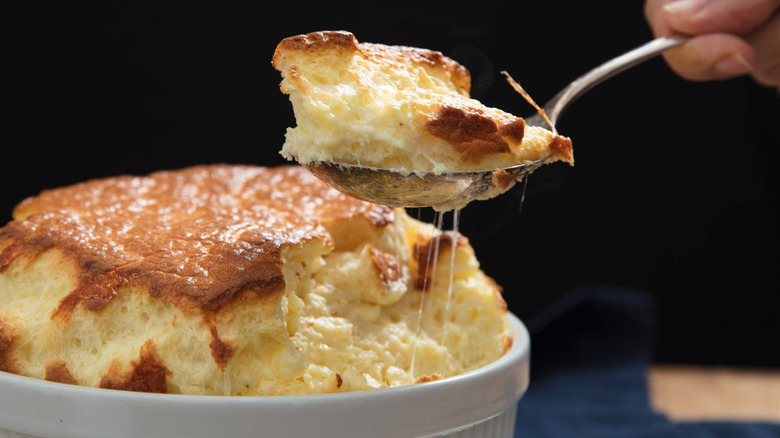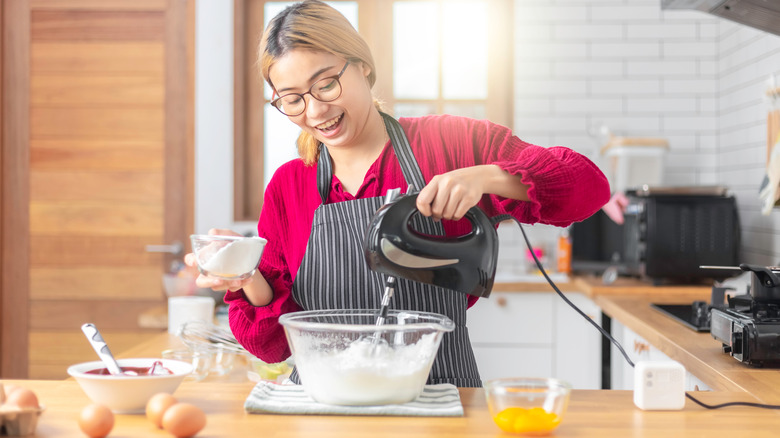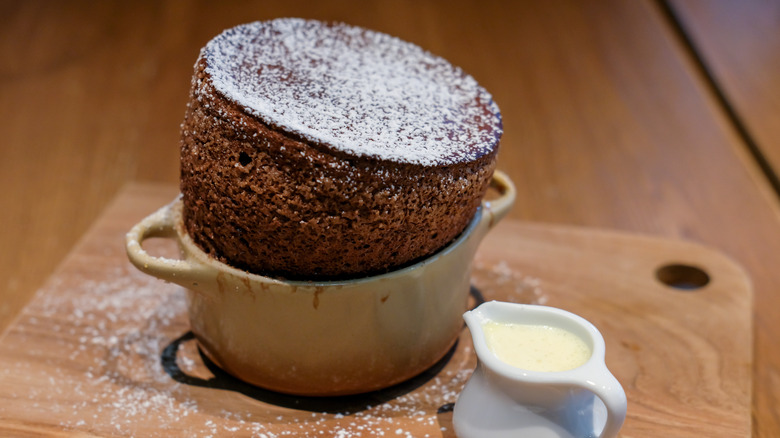What Makes Sweet And Savory Soufflés Different?
Soufflés are notoriously difficult and temperamental to make. "The Great British Bake Off" contestants have had meltdowns over stilton soufflés, and "Masterchef" home cooks have faced them in the dreaded "pressure test." They are the ultimate baked good for demonstrating both technical ability and understanding of how ingredients interact with the yolks and airy egg whites.
First made in France in the mid-1700s, a soufflé (from the French verb souffler, to inflate) is an egg-based dish that can be either sweet or savory. The recipe first appeared in an 1814 cookbook, "Le Pâtissier Royal Parisien" from French chef Marie-Antoine Carême (via Masterclass). Since then, soufflés have grown from something basic to a versatile and sometimes experimental recipe. They have become a dessert menu staple and a sign of a dedicated and accomplished home cook. It's a tricky dish to master, and both sweet and savory soufflés have their foibles.
Sweet and savory soufflés start with the same process
All soufflé recipes start the same way, by separating egg whites from the yolks. The main ingredient, besides eggs, is air. The reason air is so important in a soufflé is that it ensures that beautiful rise above the ramekin lip. To get that airy, cloud-like texture of a soufflé, the egg whites are whipped into stiff peaks.
It's important to prep the ramekins — butter is great for greasing your ramekins and ensures your soufflé won't stick (via BBC). The flavors, whether sweet or savory, are added to a base made from egg yolks. Once the egg whites and flavors are prepped, the pillowy whites are gently folded into your egg yolk base, all while being careful not to overmix. What differentiates the two versions is what you add to your egg yolk base before gently folding everything together.
Ingredients are key
For sweet soufflés, oftentimes sugar is added to the egg whites as they're whipped. Sweet chocolate soufflés often have melted chocolate added to the egg yolks and folded into the whipped egg whites (via BBC). The eggy desserts are oftentimes accompanied by crème Anglaise or a berry sauce.
Savory soufflés can feature cheese, vegetables, or even meat. Oftentimes ingredients such as gruyère, cheddar, or ham are added to a Béchamel sauce before being folded into the egg whites. But beware of the fatty ingredients, especially the cheeses, as they can weigh your soufflé down, and you won't get the rise that makes a soufflé, well, a soufflé (via Masterclass).
The next time you host friends for dinner, wow them with a cheese soufflé, or try a delicious white chocolate soufflé for dessert. But don't get discouraged if your soufflé deflates — take your time and avoid these common soufflé mistakes.


